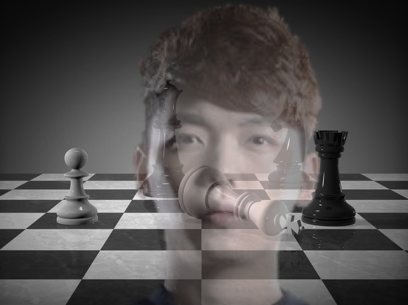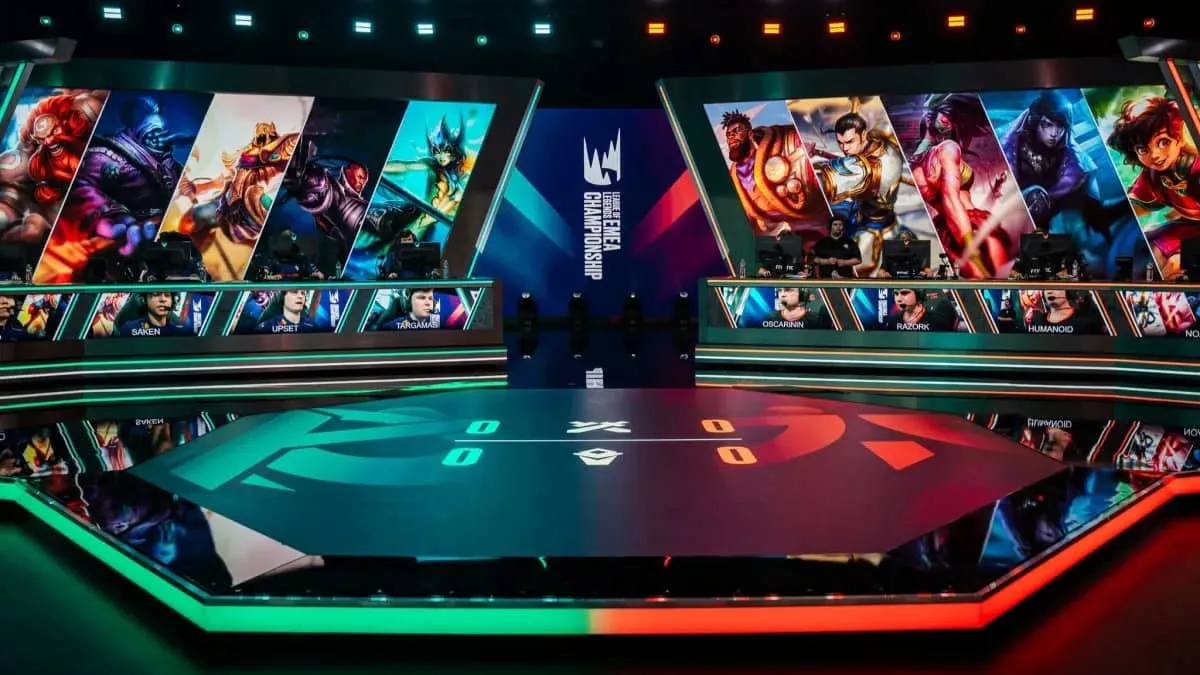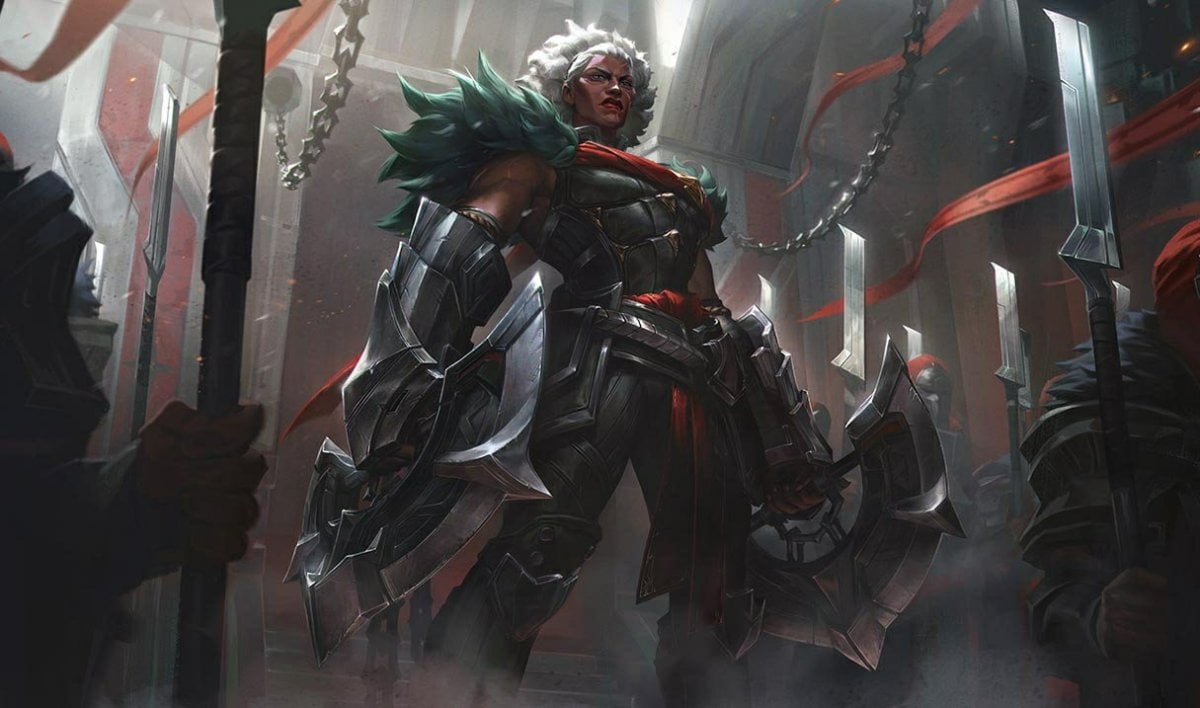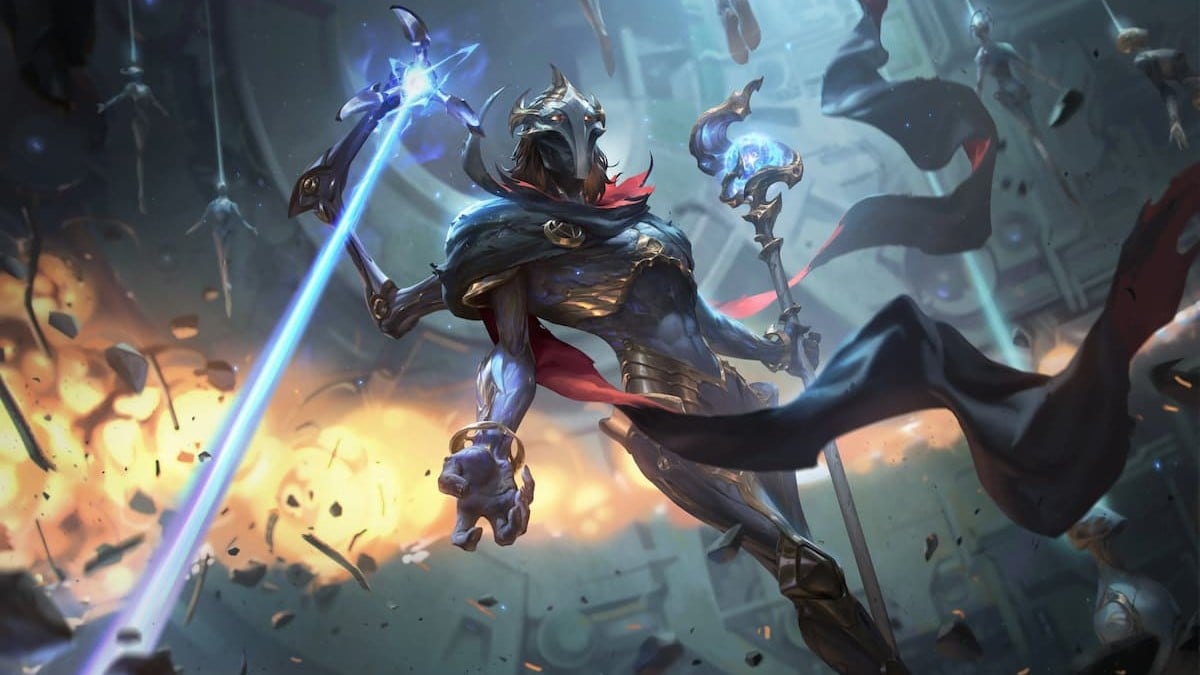
Competitive League of Legends is truly a game of great strategy. Since Season 2, every split has ushered in new strategical concepts to winning games. Perhaps the most mysterious and confusing tactic to the common eye is that of lane swaps. While we can see a lane swap take place early in the game, decisions made by teams surrounding their assignments of players to lanes can still have consequences fifteen or twenty minutes into a game. In some cases, entire games are won and lost because of brilliant or hazardous choices made by teams in the first five minutes of a game.
The Cadillac of cerebral games, chess, is similar in this fashion. The first three or so turns can often dictate the pace and battle lines within a single game. One is able to threaten certain squares through strategical play, informing the opponent that you have claimed territory as your own, and should they move a piece there, it will certainly perish. Furthermore, white and black battle one another fiercely to gain a vital asset: the game’s tempo.

An interesting concept, tempo can best be defined as having initiative over an opponent on the chess board. If one controls tempo, the opponent will be forced to react to your own moves rather than being able to make their own independent choices, less they face stark in-game repercussions for doing so. Even if a player is behind in pieces, or gold in League of Legends, holding the tempo can compensate for the difference and even mean that the team seemingly with less in their pockets is still winning the game. Essentially, controlling the tempo means controlling the game. The holder of tempo is able to impose their strategy onto the board and suppress their opponent’s tactics.
Lane swaps in League of Legends do determine the long-term outlook of professional matches, but the theoretical concept of tempo can also be applied to these calculated maneuvers. As SK Telecom defeated the Koo Tigers this last weekend, the victors, despite superior strategy, often failed to come away with early game advantages. While the early games of the 2nd and 3rd matches show blatant mistakes made by SK Telecom that result in Koo’s advantage, SK Telecom actually out-think the Koo Tigers in game 1. Nevertheless, they still fail to gain leverage over their opponent coming out of the early game due to the power of the Koo Tigers’ composition and the Koo Tigers understanding of their advantages. Following is a documentation of this truly fascinating start to the series.
Game 1
Pick/Ban

In the pick/ban phase of game 1, the objectives of each team are incredibly transparent. SK Telecom want to get Kassadin into a side lane as fast as possible so that Faker can farm up easily. With the exception of Kassadin, who will need time and resources to become relevant, SK Telecom has a fantastic mid game team. Both Rumble and Sivir are monsters in team fights once they hit level six. Should anyone be bursted down rapidly by the Koo Tigers, the Shen is there to save the day. The one odd decision on the side of SK Telecom is that of Faker taking ignite as a summoner spell instead of teleport. As the game progresses, we see how this creates issues for SK Telecom in the early game.
The Koo Tigers on the other hand have a fantastic team composition that fits the meta perfectly while simultaneously blending in the spirit of their old “Juggermaw” strategy. Smeb is put on Riven in a strong position to carry from the top lane, while the Lulu and Alistar are able to protect their hyper-carry Jinx in team fights. The Jinx pick also gives the Koo Tigers a fast-push advantage earlier in the game. Meanwhile, Hojin is put on his favorite champion in Lee Sin. Later in the game, Smeb will have the threat of a strong split-push while the rest of the Tigers provide a great threat with the Jinx in if a full out 5 versus 5 fight breaks out. It is an outstanding champion select by the Koo Tigers, and their tailor made composition looks fantastic.
Early Game Strategy
SK Telecom begin by warding their blue buff river and bottom tri-bush, while Koo is even more conservative with their ward placement and ward their red side jungle and blue buff. The only entrance to the SK Telecom jungle that is left unwarded is the path by the razorback camp, where Faker stands guard. Directly across the river is Koo’s unguarded checkpoint. However, neither team opts to enter the opposing jungle. While Marin and Bengi begin their golem camp near bot lane, Hojin and Smeb commence the game at their krug, also on the bottom side of the map.
Now, there is a critical mistake made by Koo in starting that side. The Koo Tigers send their bot lane up top, initiating a lane swap. The concept behind this is that the Jinx will be able to initiate a fast push on the top turret. However, because of the lack of information that either team has about the other due to the defensive placement of wards, neither team will know where the opposing AD Carry will be sent until they are shown in lane. Similarly, the junglers are also unaware of their counterpart’s starting position. The error made by Koo isn’t in being unaware of SK Telecom’s whereabouts, but rather in not beginning on the side occupied by their AD Carry and Support.
At 1:47 into the game, without any indication to the whereabouts of any SK Telecom member, Kuro places a ward in the river just below the dragon-side mid lane bush. No further information is revealed by this placement. The only information gained from this ward is that Faker places a similar ward a few seconds later.

Kuro’s trinket spots Faker warding the river.
Now, let’s consider what the placement of a simple ward by Faker means. Why is he warding that specific entrance to his jungle as opposed to his other side, as the ward placed earlier on the opposite side should expire soon? It’s quite simple: his jungler is on that side. By placing this ward in the vision of Kuro’s ward, the Koo Tigers should realize that Bengi is in the bottom half of SK Telecom’s jungle, but the damage is already done.
As the ward is pinged out, Wolf, playing as Shen, invades the Koo jungle in a win-win scenario for him. He, along with Faker, were the two players on SK Telecom who did not use their ward trinkets earlier in the game. Since Wolf sees that the Koo AD Carry and Support are top lane, he is able to safely enter the Koo Tigers’ jungle, knowing that he can’t be collapsed upon. If Hojin started top side, then Wolf is able to get a deep ward in to gain information on Hojin’s pathing. As Hojin is in fact on that same side finishing up gromp with Smeb, Wolf is able to harass the pair. Alas, he decides not to, opting to simply place a ward by gromp and running. Despite not choosing to be a pest to the pair of Tigers, Wolf still grants SK Telecom information that the Koo Tigers don’t possess of their counterpart.
In the meantime, Gorilla is simply taking Koo’s golems with Pray. Furthermore, Gorilla already used his trinket ward, whereas Pray had not. The issue with this is that, should the duo decide to gain information about SK Telecom’s blue side jungle, Pray will have to leave lane and miss CS. One of the great advantages of a lane swap is that it frees the support to roam around the map, but part of this asset is simply forfeited by the Koo Tigers on their own volition with Gorilla expending his ward trinket earlier. Note the last image and how Gorilla’s trinket is on cooldown.
At 2:18, Wolf roams back by the Koo Tigers’ blue buff. Wary of the threat that Wolf could possess, Hojin and Smeb retreat. At this time, Wolf has yet to actually level up a skill. Had he caught Hojin and Smeb doing the buff, he could harass with his Q, putting the duo behind. If Marin and Bengi came up with him, he could level his E and potentially attempt to pick off one or two of the Koo teammates. Both threats are undesirable for the Koo Tigers, and so Hojin and Smeb simply back off the buff.

The threat of Wolf pushes Hojin and Smeb away. Notice how Wolf has yet to level up an ability.
Marin then moves in through the river, spotted by Kuro’s ward trinket in the river from earlier. Only now do the Koo Tigers realize where SK Telecom began their jungle duo. Opting that the buff simply is not worth the risk involved in staying around, Hojin and Smeb are forced to retreat to their red buff on their other half of the map. Bengi accordingly joins Marin to duo the buff while Wolf goes bottom to help Bang push down the Koo Tigers’ tier 1 turret there.
As Jatt accurately points out in the broadcast, all champions involved ironically don’t use mana. Since the experience from blue buff is the same as any other camp, the Koo Tigers don’t actually give up much in terms of resources, as the blue buff is relatively inconsequential. Moreover, they have knowledge of SK Telecom’s jungle position on the map and know that they can safely push the top lane without anyone coming to immediately defend SK Telecom’s tier 1 turret.
That being said, let’s look at what SK Telecom gained. First, they gathered the blue buff timer of the Koo Tigers, and will later on be able to potentially play around that knowledge. Second, they have gained control over the tempo of the game.
As Hojin and Smeb arrive at their red buff, SK Telecom is already nearly done with the Koo blue buff. This exposes yet another error in the early game of the Koo Tigers. Had SK Telecom performed a delayed invade with Wolf and the junglers each took their respective buffs, SK Telecom would be able to immediately send Marin and Bengi to push down Koo’s bottom tier 1 turret, while Hojin and Smeb would have to hike the entire way to their top lane to help push. Now, Smeb could theoretically teleport to top lane and help push SK Telecom’s tier 1 turret down after taking the blue buff, but then SK Telecom would have a dangerous early game teleport advantage. Regardless, Hojing and Smeb fail to take their blue buff. Being forced away, this delays their already long path to the top lane.
Instead of initiating a fast push with four members, SK Telecom opts to only send Marin to deal with the bottom lane turret as Bengi retreats back into the river to clear the scuttle crab by the dragon pit. This is much more typical of LCK teams, as the four-man push is much more a western phenomenon. Now, to illustrate how far behind the tempo the Koo Tigers are, Marin arrives at the bottom lane at 3:04 to push down the Koo Tigers’ turret. Smeb doesn’t strike SK Telecom’s top lane turret until 3:22.
 Marin’s arrival to the bottom lane.
Marin’s arrival to the bottom lane.
 Smeb finally reaching top lane.
Smeb finally reaching top lane.
Despite this, the Koo Tigers could have taken the top turret earlier than SK Telecom had they desired to, which really illustrates the power of Jinx in this current meta. Additionally to being a late-game hyper-carry, Jinx and Tristana are able to push turrets down faster than any other champion. Instead, the Koo Tigers decide to bounce their wave, letting their minions fall to the turret before taking it. A common strategy, this means that the top wave will “reset” with the minion waves of each team meeting in the middle of the top lane.
The interesting choice by SK Telecom is that they decide not to match this strategy. The main reason in opting not to match the Koo Tigers’ bouncing of the wave could be the danger of a teleport in bot from Smeb to try and save the turret. Had they mirrored the Koo Tigers, the SK Telecom top turret would fall first, thus freeing Smeb to make the teleport play bot. Essentially, Jinx is so good in the current lane-swap meta, that despite the early game surrender of tempo to SK Telecom, she alone is able to claim it back for the Koo Tigers.
After pushing down the turret in the bottom lane, SK Telecom knows that the lane will slowly push into Koo territory. Aware that this will result in a major advantage for Smeb over Marin, they decide to have Marin burn away at Koo’s minions, pushing the wave deep into the opposing tier 2 turret before returning to base. While Marin is behind regardless, the disadvantage he’s placed at wouldn’t have been as bad had he not quickly pushed the lane in.
 Marin pushes in.
Marin pushes in.
However, this does lead to an advantage for the Koo Tigers, and we see how they are able to abuse the situation that they’ve put SK Telecom in. In the only 1 versus 1, Kuro on Lulu is pounding away at Faker’s hitpoints while simultaneously having a teleport advantage over Faker. With Lulu on their team, should the Koo Tigers decide to make a play, Kuro can simply teleport, leaving Faker alone in the middle lane without any way to join his teammates. Shortly after lanes are established, such a play occurs.
At 4:43, Bengi spots Wolf placing a sight ward in the baron-side river, and promptly clears it after placing a vision ward. As Wolf tries to get through the middle lane to come up top and join Bang, he is spotted out by the incoming Koo Tigers minion wave, and potentially Kuro as well. Correctly predicting that both Bengi and Wolf are heading top, the Koo Tigers send Hojin in, trailing Wolf from a distance. He does so by going through his own jungle so that the vision ward placed in the river earlier by Bengi doesn’t detect Hojin’s entrance into the pursuing fray.
 Not your sneakiest ninja.
Not your sneakiest ninja.
Gorilla lingers near the river bush near the top lane, and low and behold, he spots Bengi and Wolf. He immediately goes in and knocks the pair up on his Alistar, and immediately after he places a ward over the wall into the SK Telecom jungle. Knowing that escaping over the wall is the only way out for the not-so-sly duo, the ward in their jungle provides immediate access for Smeb to teleport in and cut the pair off. Kuro teleports in onto a different ward in the river and flashes over the wall to join the action. Before SK Telecom could bat an eye, Bengi and Wolf found themselves caught in a 5 versus 3 scenario, and it’s really a 5 versus 2 as Bang is too far out in lane to do anything to help his teammates. Faker can’t enter the battle as he opted to take ignite over teleport, and Marin decideds not to use his as he is at half health from soloing golems in the bot lane. Marin is soloing the golems because of the deep freeze his lane is in by Smeb’s turret.

Bengi and Wolf get caught.
Essentially, numerous SK Telecom weaknesses are all exposed at the same time, which results in first blood for Hojin on Wolf. The awareness of SK Telecom’s weaknesses by the Koo Tigers results in a net gain and strong advantage in the game’s tempo.
What We’ve Learned
SK Telecom came into the game with a well-founded strategy to the first few minutes. The Koo Tigers, on the other hand, did not. With the reluctance of Hojin and Smeb to begin jungling on the same side of their map as their bottom lane, they left themselves exposed to the roams of Wolf into their jungle. This same pattern of Hojin and Smeb beginning to jungle on the incorrect side of the map is a trend that continues in every game throughout the series. While they only lost the blue buff in game 1, later games showcase the consequences of their actions much clearer. What the Koo Tigers should have done is level pressure on the side of the map by their duo lane and focus on taking the SK Telecom blue buff in a trade of buffs.
Furthermore, Gorilla should not have used his ward trinket as early as he did, as this prevented him from roaming into the SK Telecom jungle and gaining some information as to their pathing. Pray should have expended his ward trinket in the river as opposed to Gorilla.

Another key factor in the early game was the Jinx pick. The fact that champions such as Jinx and Tristana are able to steal turrets so quickly really illustrates how powerful they are in lane swaps. Despite SK Telecom claiming tempo early, the ability of Jinx to fast-push claims the tempo back for the Koo Tigers. Their control of the tempo forces SK Telecom to take the bottom tier 1 turret without bouncing the wave, resulting in a deep freeze for Smeb. This is the power of tempo, as opponents are forced to react to an opponent’s actions without the luxury of formulating an ideal response.
Take a moment and consider how far ahead SK Telecom could have been had the Koo Tigers not had Jinx. Remember, Marin arrived at the turret that his duo lane was pushing down around 3:04. Smeb’s mirroring of this occurred at 3:22, eighteen second later. Had there been no Jinx, such a large discrepancy in time would likely have resulted in SK Telecom bouncing their wave bot and being able to teleport in and save their top tier 1 turret. This actually happens in game 3, as Marin is able to teleport in with Bengi nearby as support to save the turret that Smeb, Pray, and Gorilla try to take down.
This of course builds up to the early team fight in SK Telecom’s blue side jungle, which results in Wolf giving up first blood to Hojin. A pre-six Kassadin with teleport would likely have not had a large impact on the fight, but at least somewhat of a threat would be provided by Faker carrying teleport. Instead, having opted for ignite, the Koo Tigers are able to make this play knowing that they will have at least a one-player advantage in the skirmish. By pressing their advantages and maintaining a firm hold on tempo, the Koo Tigers make such a play possible.
Conclusion

Do you feel like a confused Nicolas Cage reading this article? Don’t worry, you’re not alone. Lane swaps are confusing. If they were simple, every team would be using the same tactics every game. The fact that the lane swap of one game alone warrants over 3,000 words speaks volumes about how hard they can be to properly dissect.
That being said, comprehending lane swaps reveals vital advantages that teams develop early on. Simple actions in an early game, such as who places a ward or where the ward is placed, act like data mines for teams that are able to successfully deduct information on their opponents. In doing so, these teams fight for tempo and control of the game. While not a commonly used metric in League of Legends, it helps demonstrate how far ahead a team is when there’s not a large gold differential to do so. While the lane swaps of each game tell a different tale, game 1 thoroughly emphasizes the importance of seemingly inconsequential actions, the power of fast-pushers, and why teleport is such a powerful Summoner Spell in the current meta.
If you enjoy this content, you can follow Xmeik on Twitter (@lolXmeik) for updates on future articles. For more of “Xmeik’s Wednesday Long Read” series, be sure to check out articles from previous weeks:
October 29th, 2015: Comparing Marin, Smeb, and Ssumday
Photo and video credit to: thesundaytimes.co.uk, lolesports, replygif.net, lolesports YouTube channel.






Published: Nov 2, 2015 11:52 pm